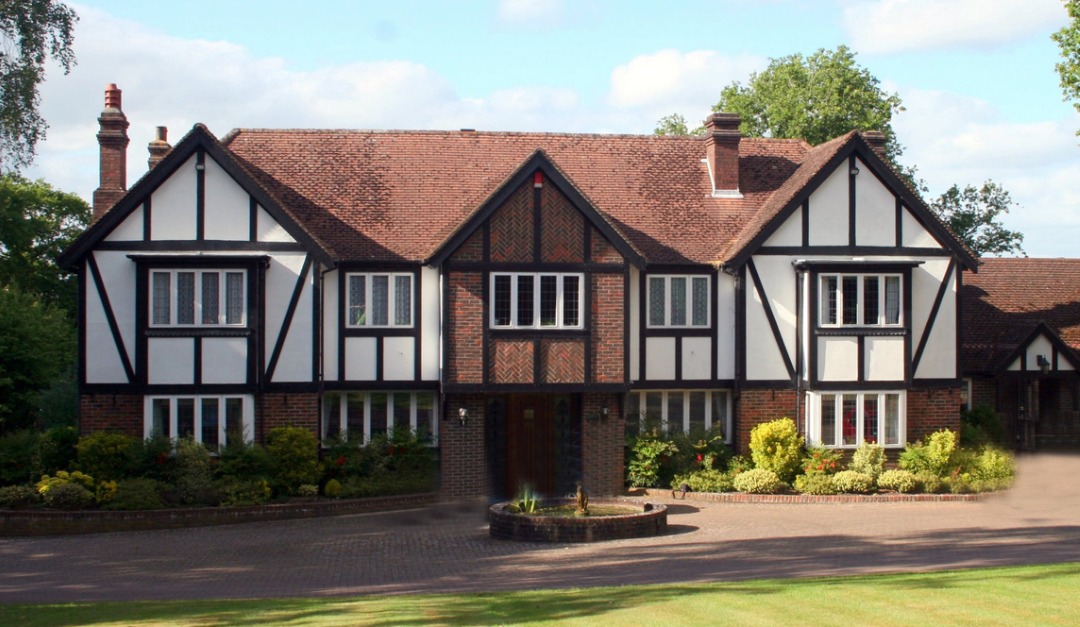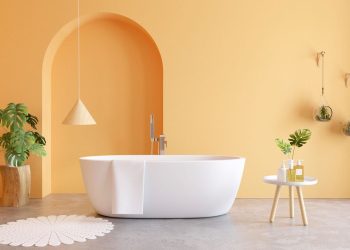Great Britain’s Tudor reign spanned 1485 and 1603 and was unprecedented in terms of prosperity. International trade led to a great expansion in free-thinking and in-home design concepts, including new ideas like the decorative indoor fireplace with a mantle, hand-made rugs from the Orient as table coverings and built-in cabinets and seating.
Tudor style is down-to-earth and charming, and many urban homebuyers are enchanted by their asymmetrical designs, distinctive half-timber accents, deeply pitched roofs, leaded glass windows, gables, turrets and brick or stone exteriors, accented by one or more large brick-patterned chimneys. The entry is typically a plank style door with a rounded arch and iron hardware.
Tudor interiors feature lots of wood, such as wide plank wood floors, wood beams on the ceiling, wood mantels and more. Timber beams on cathedral-style ceilings are usually stained dark in color. Interior walls are textured and painted off-white to mimic plaster.
With materials and craftsmanship that simply can’t be duplicated today, few Tudors were built after WWII, as the country needed quick, easy-to-build housing. But, between 1910 and 1940, Tudors comprised 25 percent of architectural styles, so they can still be found, according to House Beautiful.
Due to their solid construction, these homes can be easy to update. Lighten the interior with candle light bulbs, natural stone floors, colorful rugs and minimal furniture bedecked in plush velvets, tapestries and brocades.











